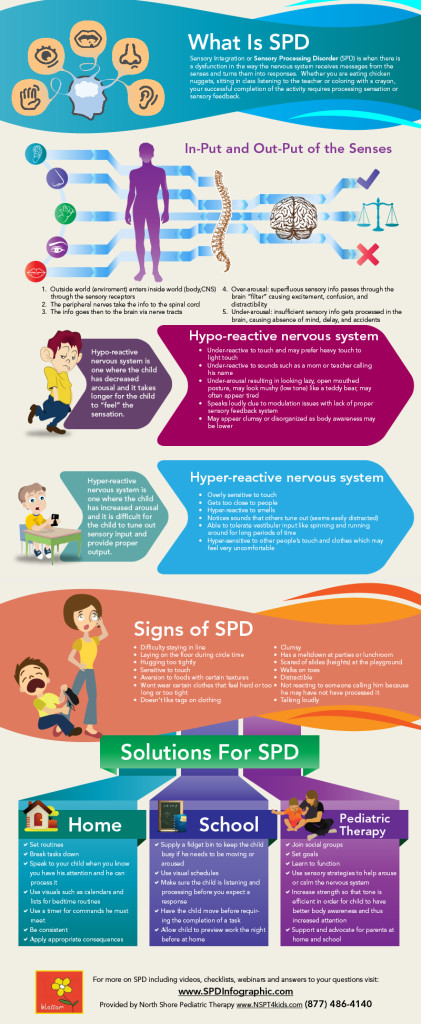Help with Sensory
Imagine being so thirsty, after a long hot workout…and you reach for a huge glass of cold filtered water, only to have it miss your mouth except for a few drops. You try again and fill another glass, it happens again….over and over and over. Only 3 drops ever making it in the mouth. THIS IS HOW OUR SENSORY KIDDOS FEEL, those who under-register sensory input, those who crave it and seek it, yet never getting enough because the message never makes it to the right place in the brain to meet the sensory nutrition requirements to maintain self-regulation, ready state, and all developmental milestones and adaptive skills for living. ~Angie Voss, OTR
Sensory Processing Disorder (SPD, formerly known as “sensory integration dysfunction”) is a condition that exists when sensory signals don’t get organized into appropriate responses. Pioneering occupational therapist and neuroscientist A. Jean Ayres, PhD, likened SPD to a neurological “traffic jam” that prevents certain parts of the brain from receiving the information needed to interpret sensory information correctly. A person with SPD finds it difficult to process and act upon information received through the senses, which creates challenges in performing countless everyday tasks. Motor clumsiness, behavioral problems, anxiety, depression, school failure, and other impacts may result if the disorder is not treated effectively.
In children who are gifted and those with ADHD, Autism, and fragile X syndrome, the prevalence of SPD is much higher than in the general population. One studies suggests that as many as 1 in 6 children experiences sensory symptoms that may be significant enough to affect aspects of everyday life functions. Symptoms of Sensory Processing Disorder, like those of most disorders, occur within a broad spectrum of severity. While most of us have occasional difficulties processing sensory information, for children and adults with SPD, these difficulties are chronic, and they disrupt everyday life.
My classroom is designed with SPD needs in mind. Lighting, classroom layout, seating, colors, and textures are all designed to be safe for sensory needs.
Click on the image below to see a higher resolution version, otherwise the small text may be hard to read.
Most browsers let you use [Ctrl][+] to zoom in and [Ctrl][-] to zoom out. Once you click on the graphic below, you can zoom in to be able to read it more easily.
Here are some links where you can learn more:











